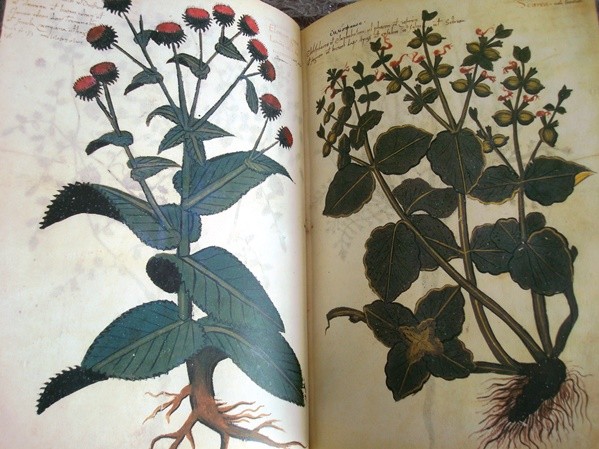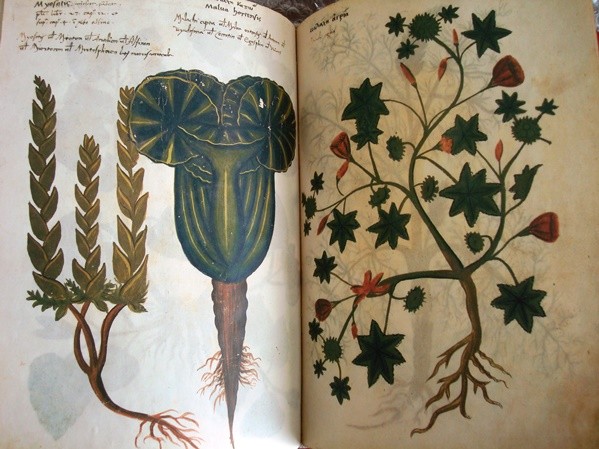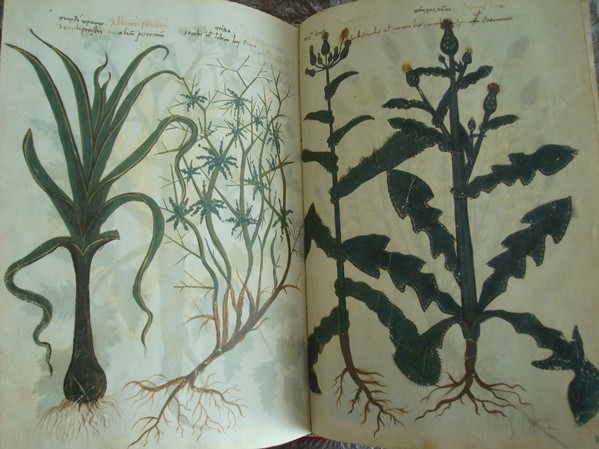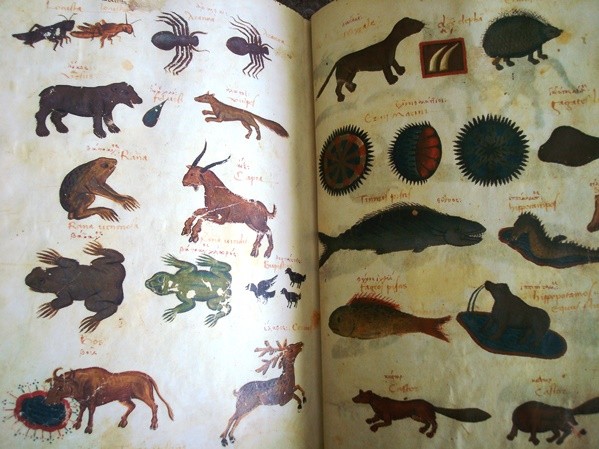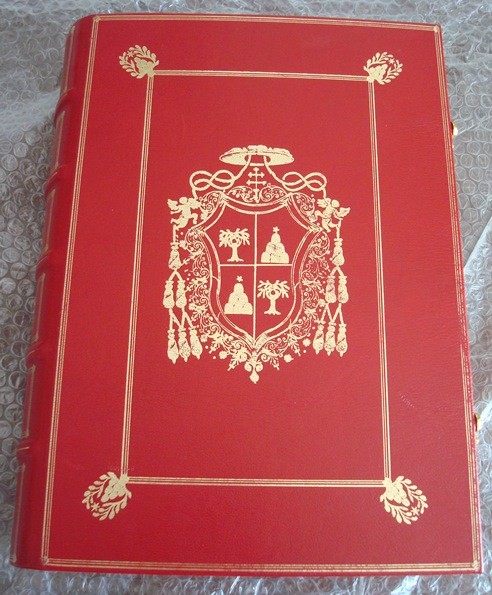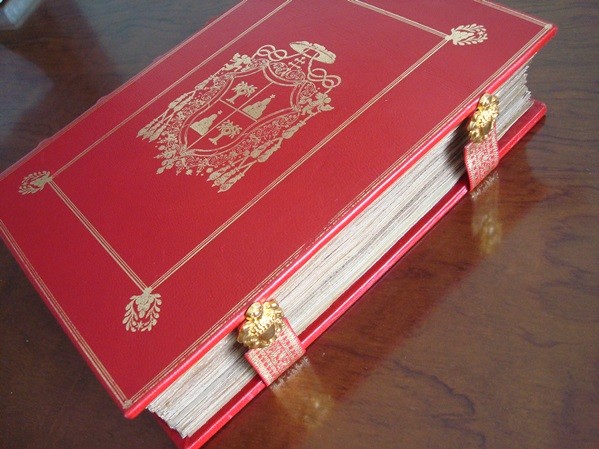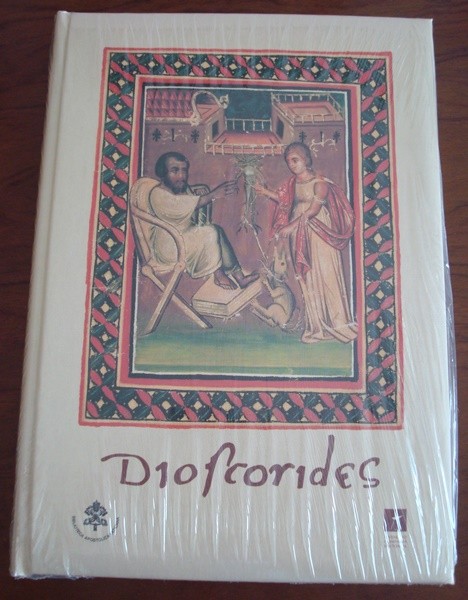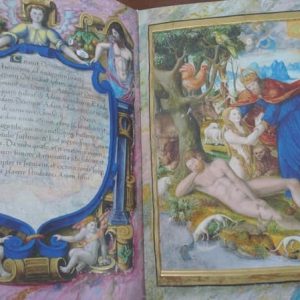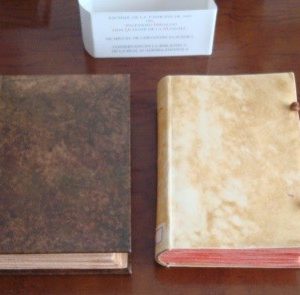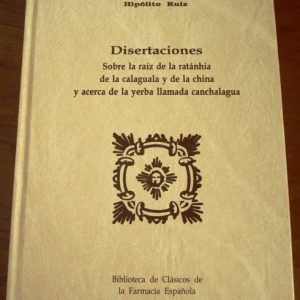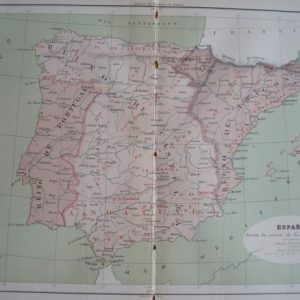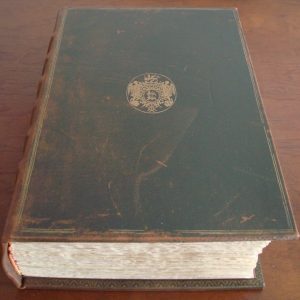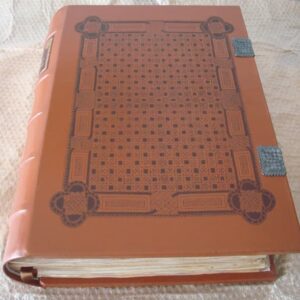Description
Original preserved in the Vatican Library, consisting of 220 pages of parchment. In his drawings are the patterns in gold stigmas of Cardinal Fabio Chigi, then Pope Alexander VII. On the back it is with the insignia “Chigiane” in gold representing a metal frame shaped garlands.
This beautiful codex is richly illustrated with images of grasses, trees, animals, birds, amphibians and insects and deals with health matters physician and naturalist of Greek Dioscorides-Pedanio, born in the first century after Christ in Anazarba in Asia Minor and active as military doctor under the emperors Claudius and Nero. Is the highest single medicine works. It is the highest medieval pharmacopoeia treaty. You will remember in simple terms what the current use of medicinal herbs, being an abbreviation of the Latin phrase “medicamentum simplex” was the stock of Greek art. This term, as explained Galen, he was given “id quod est secundum naturam Sincerum” ie, a drug natural or pure style as opposed to “medicamentum compositum”, ie a preparation resulting from the union of various substances.
Until the modern era, argued before the hiatroquímica, between the sixteenth and seventeenth century (that will bring a non-vegetable substance, especially over minerals and metals), the medicine used as drugs by mouth to supply species, a number of substances derived from the roots, bulbs, barks, resins, bud, leaves, flowers, flowering fruits, seeds, for an amount for us unpredictable trees, shrubs, plants, herbs and vegetables in general, careful and accurate collection of “simple” derived therefore a good therapeutic success of the activity of doctors and pharmacists. In other words, the importance of collecting used in a herbarium, that showed in figure explain in legend, morphological characteristics and corresponding therapeutic and organic vegetables owned to collect.
Hence the greatness of the company Dioscorides, who understands and gather as systematize empirical practice and popular medicine knew about plants and their own jobs. To this end, he got an encyclopedic herbarium (with notes also food, balms and cosmetics on various animals, poisonous species and their relative environments) that along with color drawings of each herb, root, medicinal plants, previously known ( about 600) he gathered in chapters that were useful to know, that is, with one and more names that came appointed its own characteristics and properties and their use with their curative. By tradition extension and competence of both botanical and medical, it was the example and model of herbal and pharmaceutical antidotes both East and West, and his fame has remained intact since the medieval era to the Renaissance, with various essays, many translations, brief re-elaborations until the imposing edition and printing cinqueccento.
Often, as in the case of this codex, iconographic apparatus, arranged alphabetically, was reproduced separately from the text and was employed as a botanical Atlantean for the knowledge of plants, with the name in many cases replaced or integrated those most common and local. The union with the text of Dioscorides is entrusted, as in this codex, a brief annotation claim that is attached to each picture.
Magnificent facsimile edition of 2001, limited, numbered, bound in red leather embossed in gold goat with gold hardware, following the faithful to the original design. 23 x 30 cm format. The facsimile is accompanied by a complementary study book, format 22 x 30.5 cm.
Free shipping for this item. Ask us any questions, indicating the article reference.




